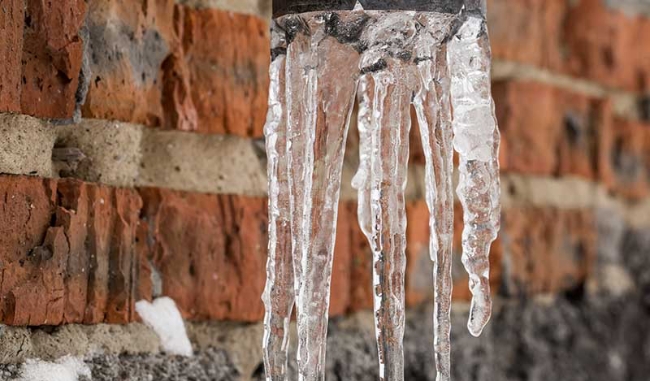How to Prevent Frozen Pipes in Cold Weather: Expert Advice
How to Prevent Frozen Pipes in Cold Weather: Expert Advice
Blog Article
Just how do you feel about Prevent Frozen Pipes ?

Cold weather can ruin your pipes, particularly by freezing pipelines. Here's exactly how to prevent it from occurring and what to do if it does.
Intro
As temperatures decrease, the threat of frozen pipes rises, potentially causing pricey repairs and water damage. Comprehending just how to prevent frozen pipes is important for home owners in cold climates.
Prevention Tips
Insulating vulnerable pipes
Wrap pipelines in insulation sleeves or make use of warm tape to secure them from freezing temperature levels. Concentrate on pipelines in unheated or outside areas of the home.
Heating strategies
Maintain interior spaces sufficiently heated, specifically locations with plumbing. Open cabinet doors to enable cozy air to distribute around pipes under sinks.
Just how to recognize frozen pipelines
Search for lowered water flow from taps, unusual smells or noises from pipelines, and visible frost on subjected pipelines.
Long-Term Solutions
Structural adjustments
Think about rerouting pipelines away from exterior wall surfaces or unheated areas. Include extra insulation to attics, cellars, and crawl spaces.
Updating insulation
Buy premium insulation for pipelines, attic rooms, and wall surfaces. Proper insulation helps maintain constant temperature levels and lowers the threat of icy pipelines.
Shielding Exterior Plumbing
Yard hoses and exterior taps
Detach and drain garden hose pipes before winter. Mount frost-proof faucets or cover outside faucets with shielded caps.
Comprehending Frozen Pipelines
What triggers pipes to ice up?
Pipes ice up when subjected to temperatures listed below 32 ° F (0 ° C) for extended durations. As water inside the pipes freezes, it expands, putting pressure on the pipeline walls and potentially causing them to burst.
Threats and damages
Icy pipelines can cause supply of water interruptions, home damage, and pricey fixings. Burst pipes can flood homes and cause extensive architectural damages.
Indicators of Frozen Piping
Identifying icy pipelines early can stop them from breaking.
What to Do If Your Pipes Freeze
Immediate activities to take
If you think icy pipes, maintain taps available to ease pressure as the ice thaws. Use a hairdryer or towels taken in hot water to thaw pipes gradually.
Verdict
Protecting against icy pipes calls for positive measures and quick responses. By recognizing the causes, indications, and safety nets, house owners can safeguard their plumbing throughout cold weather.
5 Ways to Prevent Frozen Pipes
Drain Outdoor Faucets and Disconnect Hoses
First, close the shut-off valve that controls the flow of water in the pipe to your outdoor faucet. Then, head outside to disconnect and drain your hose and open the outdoor faucet to allow the water to completely drain out of the line. Turn off the faucet when done. Finally, head back to the shut-off valve and drain the remaining water inside the pipe into a bucket or container. Additionally, if you have a home irrigation system, you should consider hiring an expert to clear the system of water each year.
Insulate Pipes
One of the best and most cost-effective methods for preventing frozen water pipes is to wrap your pipes with insulation. This is especially important for areas in your home that aren’t exposed to heat, such as an attic. We suggest using foam sleeves, which can typically be found at your local hardware store.
Keep Heat Running at 65
Your pipes are located inside your walls, and the temperature there is much colder than the rest of the house. To prevent your pipes from freezing, The Insurance Information Institute suggests that you keep your home heated to at least 65 degrees, even when traveling. You may want to invest in smart devices that can keep an eye on the temperature in your home while you’re away.
Leave Water Dripping
Moving water — even a small trickle — can prevent ice from forming inside your pipes. When freezing temps are imminent, start a drip of water from all faucets that serve exposed pipes. Leaving a few faucets running will also help relieve pressure inside the pipes and help prevent a rupture if the water inside freezes.
Open Cupboard Doors
Warm your kitchen and bathroom pipes by opening cupboards and vanities. You should also leave your interior doors ajar to help warm air circulate evenly throughout your home.

We are very curious about How To Avoid Freezing Pipes and I'm hoping you appreciated the blog entry. Are you aware of somebody else who is fascinated about the niche? Take a moment to share it. We take joy in reading our article about Preventing and dealing with frozen pipes.
Details Here Report this page